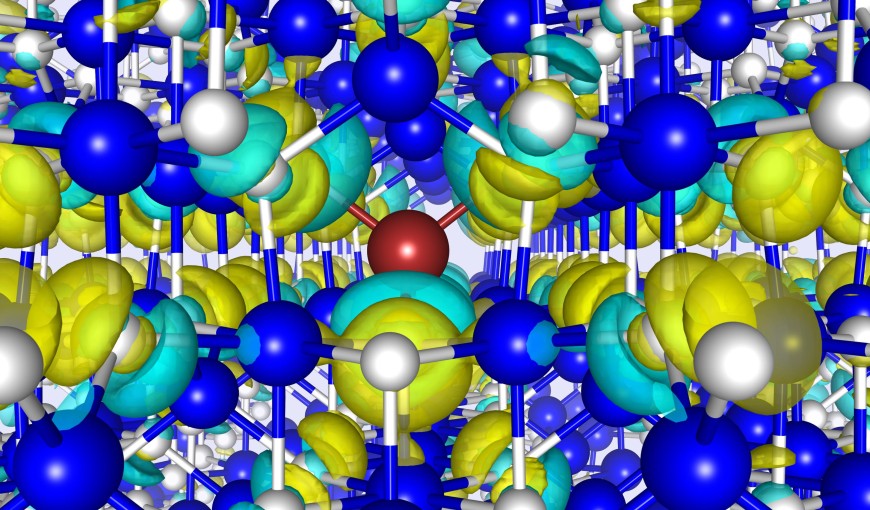Vanadium dopants in indium sulfide
Intermediate band solar cells?
2023/08/06 by K. Albe
Intermediate band solar cells offer a way to exceed the Shockley-Queisser limit for a cell's efficiency. To do this, an interband energy level is introduced between the valence and conduction bands. Our recent study shows that vanadium forms an intermediate empty band in alpha-indium sulfide at low concentrations.

Vanadium doped indium sulphide, In2S3:V, is studied as a potential absorber material for intermediate band (IB) solar cells. Based on electronic considerations, it is usually assumed that V occupies octahedrally coordinated In sites, although geometrical considerations would favour tetrahedral In sites. In this study, we therefore combined experimental x-ray diffraction and x-ray absorption spectroscopy with ab initio theoretical calculations of both alpha- and beta-phase to elucidate the incorporation of V in In2S3:V thin films grown with different V content and different growth temperatures. Comparing shape and position of the measured and calculated x-ray absorption edge of V, comparing experimentally determined and calculated V–S bond lengths, and evaluating the calculated heat of solution of V on different lattice sites all indicate that V is incorporated on octahedral rather than tetrahedral sites in the In2S3 matrix. For this material system, the electronic benefit of octahedral coordination thus outweighs the mechanical stress of the associated lattice relaxation. Finally, we studied the electronic structure of V-substituted alpha-In2S3 using hybrid density functional calculations and find that for a concentration of 1.9 at %, V on octahedrally coordinated In sites forms an empty IB isolated from valence band and conduction band (CB). By increasing the V content to 3.8 at %, however, the gap between IB and CB closes, which results in a reduction of the band gap. This differs from the electronic structure calculated for beta-In2S3 and clearly demonstrates that both crystal structure and V incorporation site affect the resulting electronic material properties.
E. Ghorbani et al., Journal of Physics: Energy, Volume 5, Number 3



